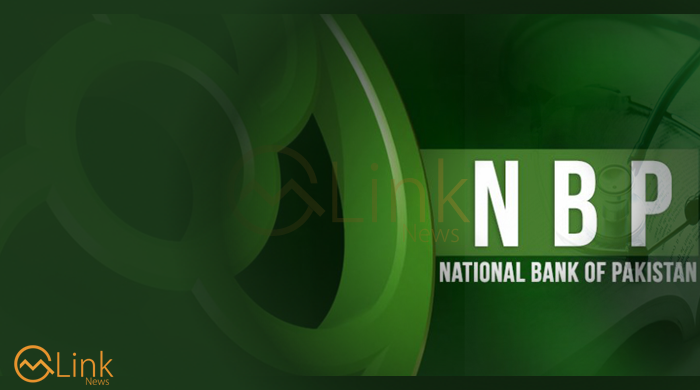July 30, 2021 (MLN): Not too long ago, BankIslami was in the news for all the wrong reasons. The cyber attack it faced exposed vulnerabilities in not only its system but raised questions about the broader financial services sector.
Soon after, reports started emerging of CNIC data of Pakistanis being dumped on the dark web and what not. As a result, the regulator stepped and tightened the conditions.
Whether that episode offered any learning to the rest of the country to make their systems secure remains to be seen, but it seems to have triggered a shift in the way BankIslami operates, which transcended beyond cyber security. Its banking operations have grown rapidly since then 2018, with profit after tax rising from just Rs212 million to Rs1.7 billion in 2020.
To get a better sense of what BankIslami is doing differently this time and how it plans to continue growing, we interviewed its CEO, Syed Amir Ali, who previously was part of the leadership team that scaled Meezan Bank to where it stands today.
Below are the edited excerpts.
Despite phenomenal growth in deposits and profitability over the past few years, the bank’s share price has effectively stayed at the same level. Why do you think the market hasn’t responded?
You are right that our profits have grown from just Rs200 million in 2018 to Rs1 billion in 2019 and hitting Rs1.7bn in 2020. Same happened with the balance sheet which almost doubled but the share price has not followed that. There are two reasons for that: first, if you look at the volume back then, it was hardly 5,000 shares a day so it wasn’t even reflective of the financial performance. But now, the volume has picked up, even crossing 1m on some days so there is some investor interest in the stock.
If we look at the price over the last year, it has moved between Rs7 and Rs14.5, which is not much in rupee terms but reflects a 100% change still. That said, I think the price should have been higher based on the earnings which clocked in at Rs1.5 apiece in 2020. But the market is smart and doesn’t only what has happened but looks for sustainability. So a two-year performance for a bank that wasn’t doing well for the last 12 years still does not give the investor enough confidence. In order to attract them, our growth story has to be sustainable. The same happened with another bank often hailed as a great success, without naming, whose share price didn’t move much in the initial years. With our story of 3-4 years, the market will start believing in the stock. It’s still underpriced whatever metric you take so it’s a good buy for investors. If we continue performing the same way, I believe there is potential of doubling their positions.
A few years ago, BankIslami faced a cyber attack which raised questions over the system’s security. What have you done to improve that and ensure no such event takes place again?
While we can’t undo what happened in 2018, the episode provided us with learnings. What we have done since then is built a very powerful information security department (ISD) with around 25 people working there and given them all the tools in the world to do monitoring and controls. When the attack happened, the bank only had a web application firewall and none for the data centre. Now we have both. At the time, we didn’t have an advanced threat protection system but we have subscribed to Trend Micro’s software, which monitors all types of malicious traffic apart from being an anti-virus engine. It detects any unusual activity on your network, email or end point. Then we also bought FireEye. Both these solutions are top of the line and quite expensive but we have deployed them
On top of that, the bank has also deployed a DNS security system whereby every DNS injection or poisoning is monitored. Keeping in with all these tools for monitoring and protection and a security operations centre, CT360 – an organisation that assesses information security measures being taken by financial institutions covers almost all banks in Pakistan and publishes a rating – rated BankIslami as the best in the country. But that doesn’t mean we can’t be compromised: it’s a constant process of enhancing your security and preparedness level and is not just limited to the tools but also the mindset. And the mindset we have created here from top to bottom is very different. For example, access is given on the basis of need rather than grades. It’s the whole shift in approach that we have gone through which has resulted in us ranking the best in Pakistan.
The bank has more than doubled its gross advances. Can you tell us about the segments that you are lending to?
It won’t be appropriate to compare corporate banking with consumer in rupee terms since the latter will always be dwarfed by the former due to the difference in ticket size. Better would be to look at the number of borrowers. Through that lens, we serve the most customers in auto finance, where the size of the book has grown by 70% to Rs17bn over the last years. Second comes housing where the portfolio has increased by 40% and these two are our flagship. Third is SME and finally, there is commercial/corporate, which obviously happens to eat up the largest amount of funding.
What are your key growth targets over the next two years with respect to key items like Current Accounts-Savings Accounts ratio, deposits, branches?
The biggest target for us is to bring our deposits to Rs500bn over the next two years. As for CASA ratio, it currently stands around 64% but we want that to cross 70%. That’s extremely important to us. The aim for the branch network is to increase the number from existing 340 to somewhere between 400 and 440.
What kind of customer response did BankIslami notice with respect to the Kamyab Jawan Programme? How has the disbursement been?
I think the Kamyab Jawan Programme has not been able to achieve desired results for many reasons. As for BankIslami, we have crossed our targets, in fact doubling them. But we have operated more into Tier 2 and 3 by disbursing Rs10m or more to SMEs. But most of them were existing businesses, not new, though now they are able to access financing. There’s another Tier which is very important with limit up to Rs1m – such as the doodhwala, kiryana or the paan shop – in which commercial banks haven’t performed well since they have neither the mindset nor the expertise to serve this segment. What the government is now trying to do is bring the microfinance players who have more experience here.
We tried to do it as well and made disbursements too but couldn’t generate the same type of traction as the employees haven’t done such transactions in like 20 years. The bank is still investing and trying to train them with a different mindset and as far we are concerned, Tier 1 will continue to be a focus area for us.
What about Mera Pakistan Mera Ghar? How has the traction been there?
Mera Pakistan Mera Ghar was a product primarily designed by the government, not the banks, whereby they said it is only available on newly built houses. So the scheme was rolled out during 2020, towards the end of lockdown, and somebody thought people were constructing properties in the middle of the pandemic to sell them later on. This continued as is till March 2021, when the circular was revised after this new construction requirement was relaxed.
It was only after this that the disbursement started, meaning the actual experience of the scheme is only four months old. Before that, despite the efforts of the banks, there was no supply of newly built houses available. Secondly, the cap from house price was also removed along with the increase in financing limit for Tier 3. Since then, there has been some traction. As for BankIslami numbers, we were supposed to 34 cases by June, but ended up doing 91. Similarly, we well exceeded the target by doing Rs144 in disbursements value. Our performance on both the fronts – the number of houses and rupee terms – was north of 300%.
MPMG is an excellent scheme, as it enables the middle class to own a house at an instalment which is not very high from the rental value. It’s still a little high as rent is around 3-4% of the house price, here it is 5-7% depending on the tier as the principal is also included. It’s still low enough to incentivise home ownership.
The bank has recently become active in public sector transactions, first the National Transmission and Despatch Company and now Pakistan International Airlines. What’s the economic rationale here, especially in the latter?
In the public sector, you have to classify the projects in terms of growth which NTDC is clearly one. When it comes to PIA, you can raise the question that it’s not a growth entity and exists only to fill a gap that others perhaps are not willing to. But the structure of this structure is very different: the cash flows being generated from sales in Lahore and Karachi are tagged to it.
Pre-Covid, these cash flows were at Rs2 billion and as of today, they stand north of Rs400m and the installments which have to be served through the cash flows is Rs125m. This is despite virtually no international flights at the moment. So the transaction makes sense based on these numbers, in addition to the fact that it is guaranteed by the government. It’s just a support instrument, and this is more of an exception for us. You won’t find us doing other projects similar to PIA.
Copyright Mettis Link News







